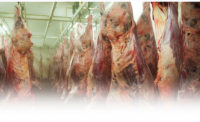Independent Thoughts
Navigating the food safety landscape: the crucial role of traceability
Cloud-based software and information access help streamline traceability in the global food supply chain.

Marcus Lindstrom / Royalty-free/E+ Collection
Traceability is paramount in the meat and poultry industry. Like other food and beverage sectors where consumer safety is of foremost concern, being able to trace a single food item end-to-end throughout the supply chain is essential for suppliers and consumers alike.
And as the food supply chain has expanded to a global scale, the relationship between producer and consumer has grown further apart. Whereas the old model had a dinner roast coming from the butcher shop on the corner, today’s model often shows production and consumption happening thousands of miles apart. As this model evolves, so too must the infrastructure of record keeping and compliance.
The challenge in achieving food supply chain traceability is multifaceted. Meat and poultry items often travel large distances, and over those miles the items pass through a variety of social, economic, and cultural environments. Players in each of these environments must interpret and adhere to the same guidelines set forth by the Food and Drug Administration (FDA), the U.S. Department of Agriculture (USDA), and any other regulatory agency overseeing the production, processing, and distribution of meat and poultry.
Laborers at one end of the food supply chain are often non-native English speakers with lower rates of literacy. According to statistics published by the Department of Labor in 2018, 77% of U.S. farmworkers report Spanish as their primary language. This report also states that the average level of formal education completed was eighth grade. Therefore, compliance to pertinent guidelines must be tailored to all levels of experience and available in all languages of the users.
Identifying the vastness of the global food supply chain reveals that the tech sector is ripe with solutions. Today’s tech solutions offer ready-made customization in the form of translation software, infographics, flowcharts, and embedded videos. These helpful tools are all easily incorporated into platforms and can be tailored to each user’s individual needs.
Furthermore, the availability of cloud-based platforms has elevated technological capabilities to the next level. No longer does every physical operation need its own server or set of file cabinets. Rather, information is stored virtually and remains accessible from anywhere at any time. A common database can be accessed and amended from everywhere — from the farms, to the feedlots, to the butcher shop, to the grocery store.
Not only does the use of cloud-based technology streamline operations for production traceability, but it also does the work ahead of time for regulatory compliance audits and recalls, mock or otherwise. Documentation does not have to be meticulously prepared ahead of time because everything is already in order when a cloud-based platform is being employed.
The Food Safety Modernization Act’s (FSMA) Traceability Plan guide mandates specific guidelines and standards for record keeping and recall procedures. To this end, the use of lot codes is mandated across all sectors of the food supply chain. Compliance and data sharing is significantly improved with a cloud-based system. All involved parties can be in separate parts of the same location or in different parts of the world altogether, and they can still be on the same page operationally with access to accurate and real-time lot code information.
Within the context of FSMA 204, the FDA’s commitment to increased traceability demonstrates a shift in focus from response to prevention. And cloud-based tech solutions have the unique ability to achieve higher standards of efficacy and implementation across the global meat and poultry supply chain. Records are created, stored and shared in perpetuity, and those records can be instantaneously accessible from anywhere resulting in a safer and more streamlined global food supply chain for producers and consumers alike.
Looking for a reprint of this article?
From high-res PDFs to custom plaques, order your copy today!






